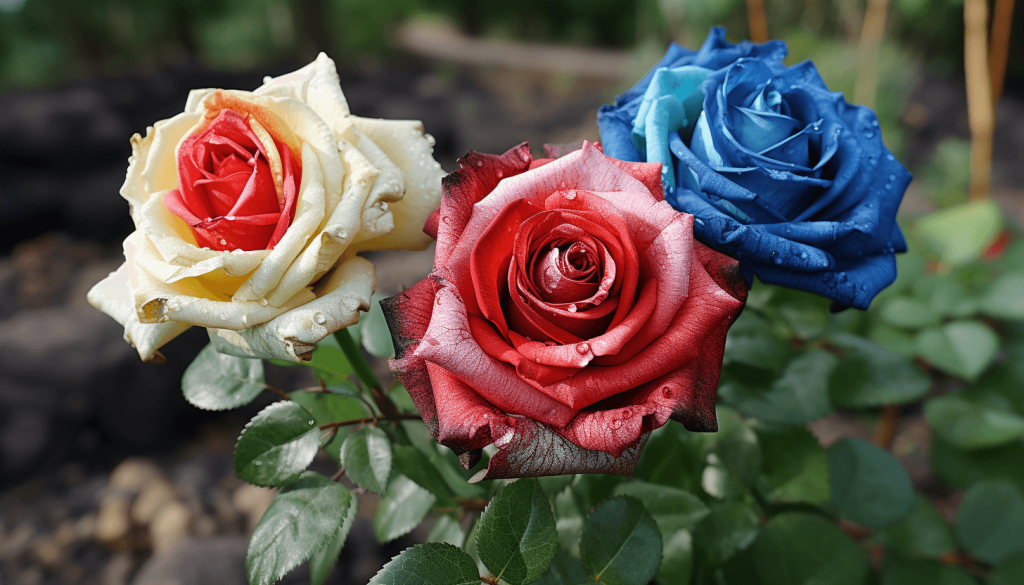The Symbolic Meaning of the Rose
The rose, one of the most iconic and revered flowers across cultures, carries deep symbolic significance. Universally known as a symbol of love, passion, and romance, the rose also embodies different meanings based on its color. Red roses, for instance, represent deep love and respect, while yellow roses stand for friendship and joy. White roses convey purity, innocence, and remembrance. Beyond just love, roses have also been symbols of confidentiality, honor, and even political factions, like the Wars of the Roses in England. With its multi-layered petals and delicate fragrance, the rose’s symbolism extends into themes of balance, beauty, and new beginnings, making it a versatile and meaningful flower in various contexts.
| 1. Red Rose | 2. White Rose | 3. Pink Rose |
| 4. Yellow Rose | 5. Orange Rose | 6. Lavender Rose |
| 7. Blue Rose | 8. Green Rose | 9. Black Rose |
| 10. Cream Rose | 11. Peach Rose | 12. Coral Rose |
| 13. Burgundy Rose | 14. Teal Rose | 15. Gold Rose |
| 16. Silver Rose | 17. Rainbow Rose | 18. Brown Rose |
Origins and Historical Significance of the Rose
When one imagines a rose, images of timeless beauty, delicate petals, and a scent that evokes deep emotion come to mind. But where did this emblem of passion and elegance originate? The tale of the rose is as old as time itself, a journey that weaves through ancient civilizations, carrying with it tales of love, power, and reverence.
The name ‘rose’ is derived from the Latin word ‘rosa’. Its name has remained relatively consistent across many languages: rosa in Spanish and Italian, rose in French and German, and roos in Dutch.
The ancient Egyptians were among the first to cultivate roses. They held the flower in such high regard that rose petals were often found strewn in tombs, accompanying the departed into the afterlife. Cleopatra, the famed queen of Egypt, was known to have filled her chambers with rose petals to enthrall her lovers, using the allure of the rose as a tool of seduction.
Moving westward to ancient Greece, roses were symbolically linked to Aphrodite, the goddess of love. Legends speak of the flower springing forth from her tears and the blood of her lover, Adonis. The Romans, ever the connoisseurs of luxury, were known to carpet their grand banquets and celebrations with rose petals. They recognized the dual nature of the rose – its ability to signify confidentiality and its embodiment of love and beauty.
The rose’s journey doesn’t end there. With the spread of Islam, roses became central in Mughal gardens and tales. They were symbols of paradise, as mentioned in the Quran. The famous rose water and rose oils, staples in perfumery and medicine, can trace their roots back to this era.
In the medieval ages, roses took on religious significance in Christian contexts, symbolizing the Virgin Mary. The rose then became a staple in European gardens, with hundreds of hybrids blooming by the 17th century, leading to the rich diversity we see today.
So, when we gaze upon a rose today, we aren’t just looking at a flower. We are beholding a symbol, a living testament to its timeless journey through history, touching countless lives with its beauty and meaning.
Ready to dive deeper? As we unfurl the petals, we will uncover the varied hues of roses and the unique tales each color tells.The Vibrant Palette of Roses: Color Meanings
1. Red Rose: The Timeless Emblem of Love
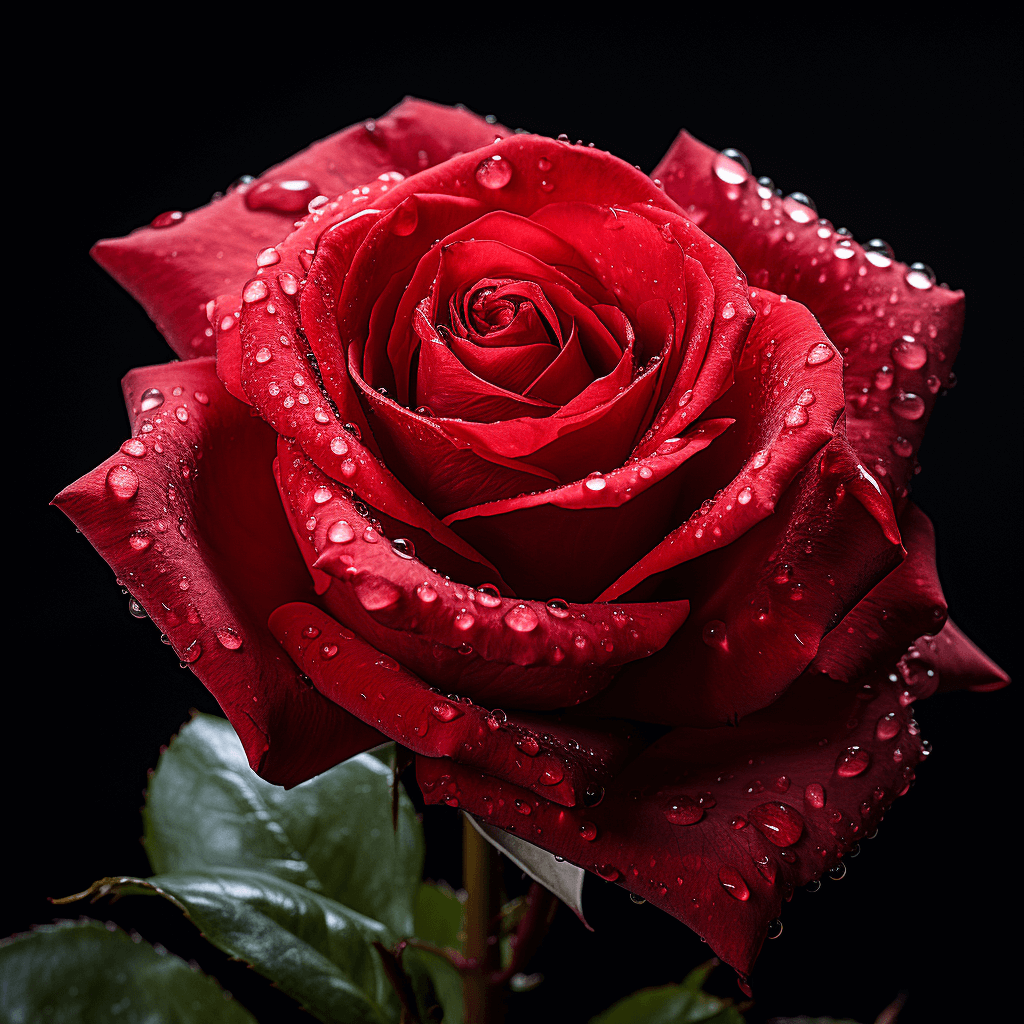
Undeniably, the red rose stands tall as the ultimate symbol of love and romance. It’s no wonder it has captivated hearts and inspired poets for centuries.
- History: From Shakespearean tales to modern-day romantic gestures, the red rose has consistently been associated with deep affection and passion. The rose’s rich crimson shade has long been cultivated to capture the essence of fervent emotions.
- Symbolism: Representing true love, desire, and respect, its vibrant hue captures the essence of heart-felt sentiments.
- Occasions: Perfect for romantic gestures, anniversaries, and Valentine’s Day, the red rose is a timeless choice to convey deep feelings.
- Varieties: With numerous breeds, such as the ‘Black Magic’ and the ‘Veteran’s Honor’, each offers a unique shade and sentiment of red.
- Cultural Significance: In many cultures, the red rose is a universal symbol for love. From East to West, it plays a central role in romantic gestures, especially in marriage ceremonies and love celebrations.
2. White Rose: The Blossom of Purity
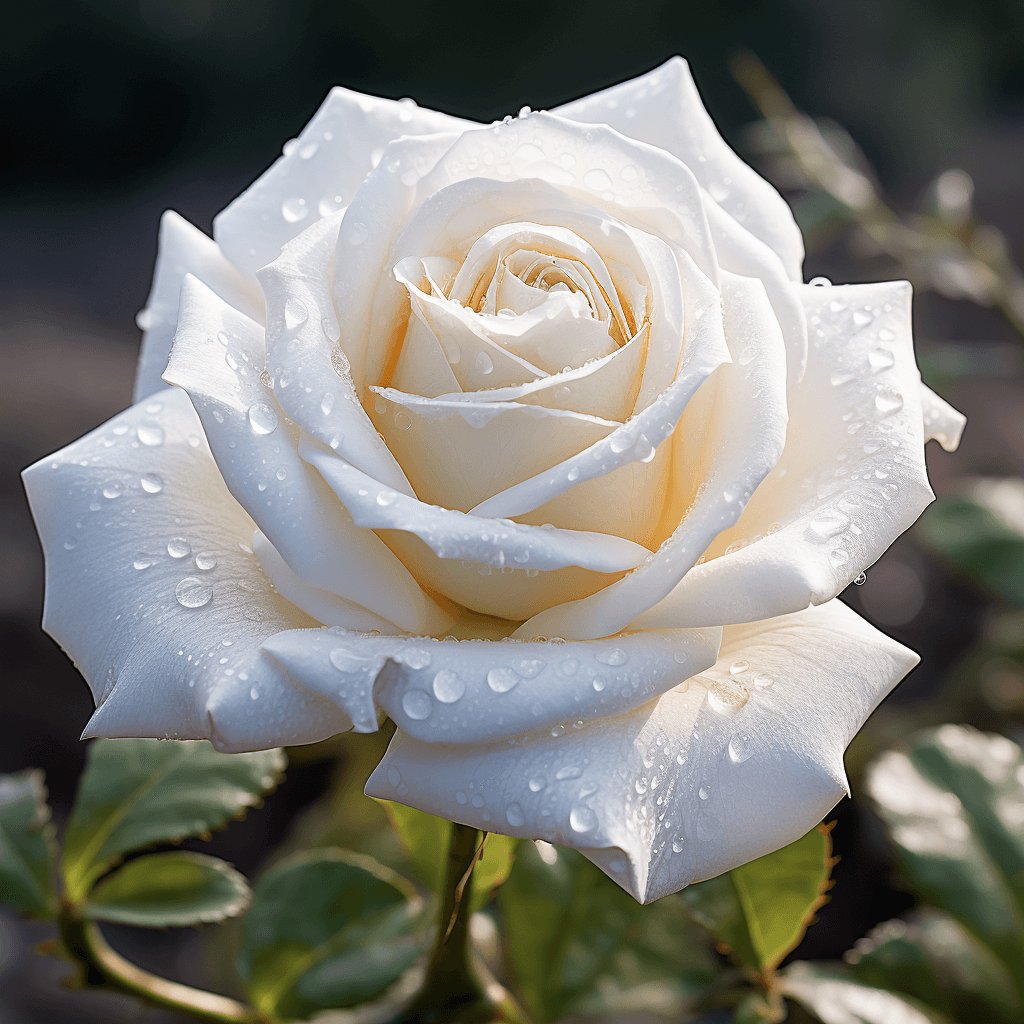
A stark contrast to its red counterpart, the white rose is a symbol of purity, innocence, and new beginnings.
- History: Historically, the white rose was associated with the Virgin Mary, making it a symbol of purity in Christian traditions. It has also been used as a mark of reverence and remembrance.
- Symbolism: Representing chastity, humility, and innocence, the white rose often graces weddings, symbolizing the pure love and unity of the newlyweds.
- Occasions: Ideal for weddings, christenings, and funerals, the white rose is versatile in its meanings, representing both new beginnings and fond farewells.
- Varieties: With breeds like the ‘Winchester Cathedral’ and the ‘Pope John Paul II’, these roses carry a heavenly and serene feel.
- Cultural Significance: In various cultures, white roses are presented during rites of passage ceremonies. In some traditions, they are offered as a token of peace or truce.
3. Pink Rose: A Delicate Expression of Admiration
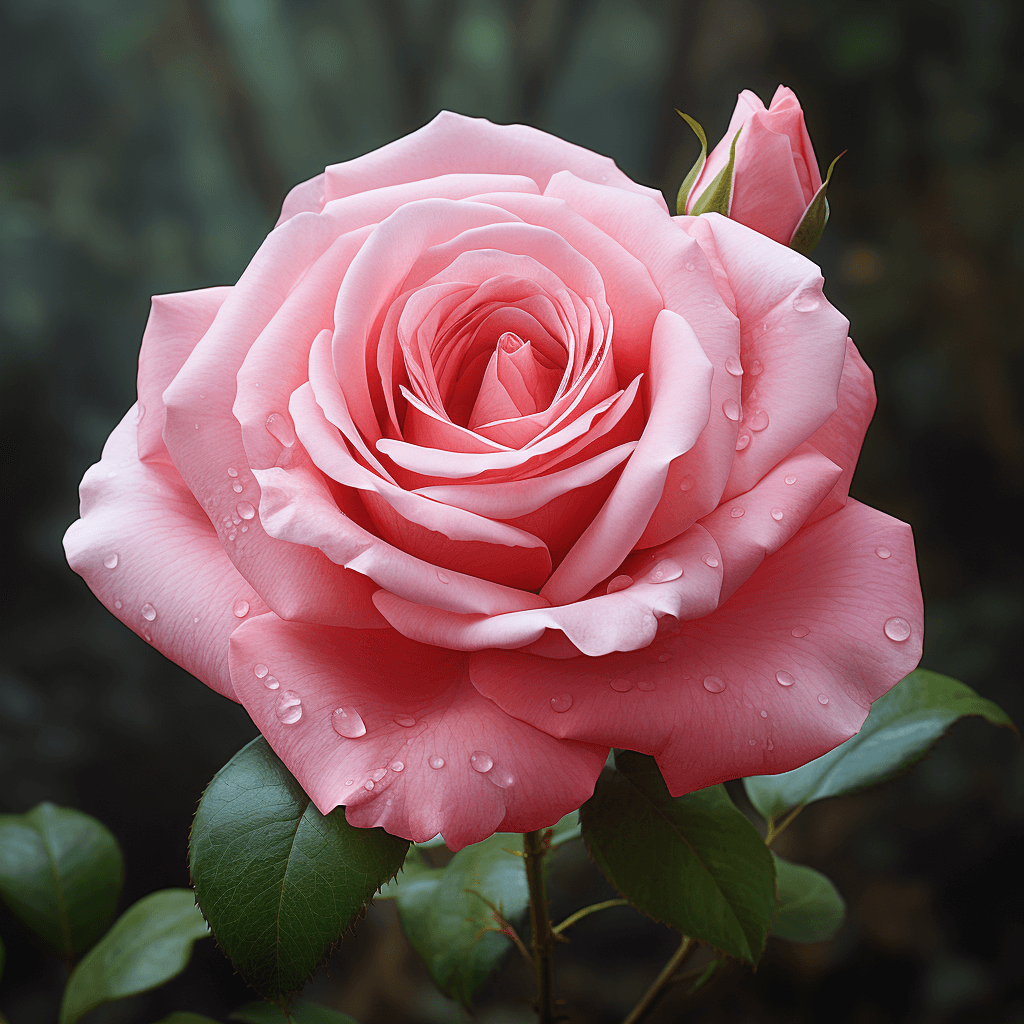
The pink rose, with its soft hue and gentle appearance, effortlessly evokes feelings of grace, elegance, and poetic romance.
- History: Once a prevalent rose in wild habitats, the cultivation of pink roses began around 5,000 years ago. Their history is intertwined with Greek mythology where they were believed to be created from the tears of Aphrodite.
- Symbolism: Ranging from appreciation to joy, the pink rose expresses gratitude, grace, and admiration. Its varying shades, from deep pink to blush, signify different intensities of these sentiments.
- Occasions: Ideal for expressing thankfulness, celebrating joyous occasions, or simply showing appreciation, the pink rose is a versatile choice for various events.
- Varieties: Popular varieties include the ‘Queen Elizabeth’ and the ‘Bewitched’ rose, each offering a distinct shade of pink and a unique charm.
- Cultural Significance: In many cultures, the pink rose is seen as a token of admiration, joy, and even a young love’s gentle passion.
4. Yellow Rose: The Sunshine of Friendship
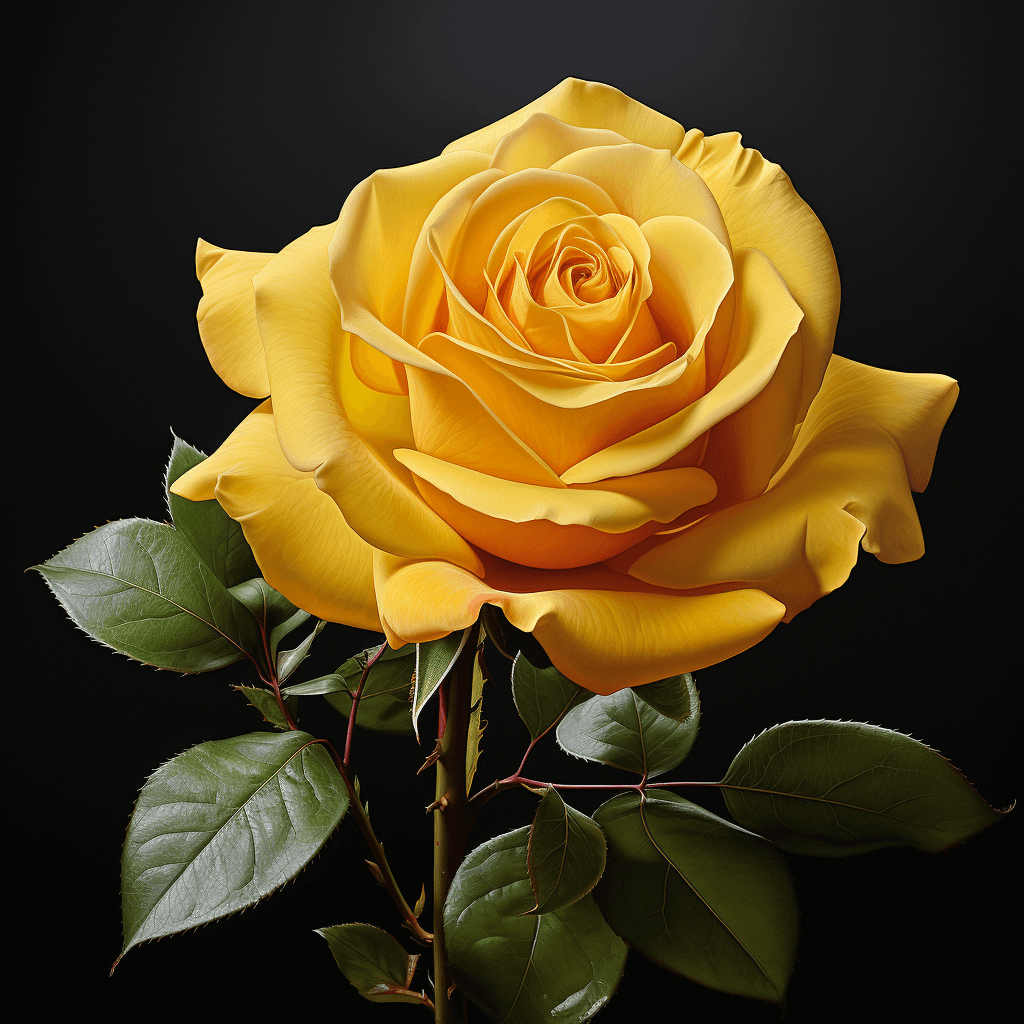
Reflecting the warmth and brightness of the sun, the yellow rose stands as a beacon of friendship, joy, and care.
- History: The yellow rose’s origin traces back to the Middle East and North Africa. Brought to the West in the 18th century, its initial romantic connotations transformed over time to represent platonic love and friendship.
- Symbolism: Symbolizing friendship, happiness, and care, the yellow rose conveys feelings of warmth and affection without the romantic undertones.
- Occasions: Perfect for cheering someone up, celebrating friendships, or marking a joyous occasion, the yellow rose is the go-to choice for a dose of happiness.
- Varieties: Among the vast array of breeds, ‘Golden Celebration’ and ‘Sunsprite’ are particularly popular for their vibrant hues and fragrant notes.
- Cultural Significance: In various parts of the world, the yellow rose signifies happiness, prosperity, and even a wish for recovery and good health. It’s a universally loved color that brings a smile to the recipient’s face.
With each color, roses take on a myriad of emotions, making them one of the most expressive flowers in nature. Let’s continue to unveil the stories behind these colorful blooms.
5. Orange Rose: Vibrancy and Zeal
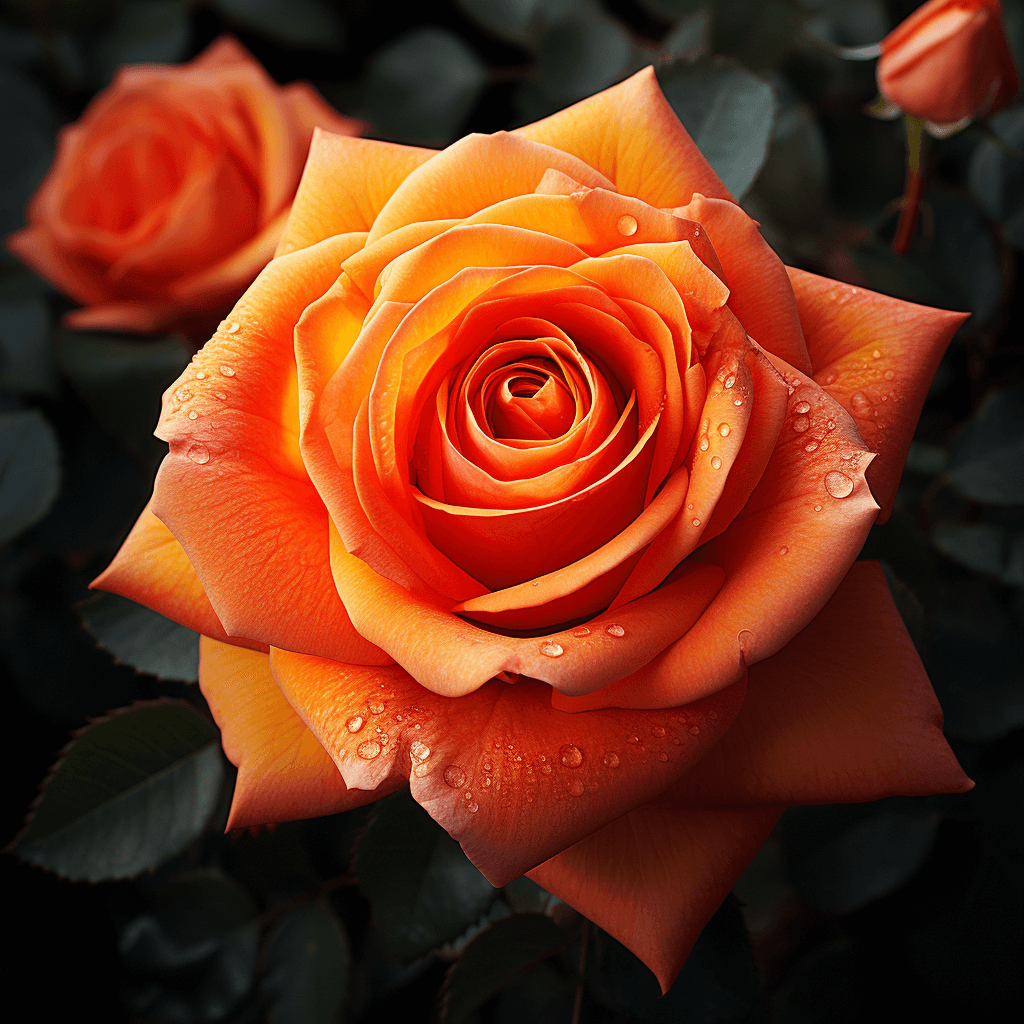
Capturing the essence of a fiery sunset or the first glow of dawn, the orange rose is a lively and passionate representation of fascination and enthusiasm.
- History: The orange rose is relatively newer in the grand history of roses, emerging as a result of hybridization techniques in the 20th century.
- Symbolism: Representing a mix of the passion of red roses and the friendship of yellow ones, orange roses stand for fascination, attraction, and budding romantic feelings.
- Occasions: Perfect for a burgeoning romance or to express admiration, the orange rose also brilliantly marks celebrations of any achievement or joyous occasion.
- Varieties: Among the many, ‘Tahitian Sunset’ and ‘Orange Crush’ stand out for their particularly vibrant and mesmerizing hues.
- Cultural Significance: Often seen as a bridge between friendship and love, many cultures gift orange roses to convey a message of growing romantic interest or deep admiration.
6. Lavender Rose: A World of Dreams and Wonder
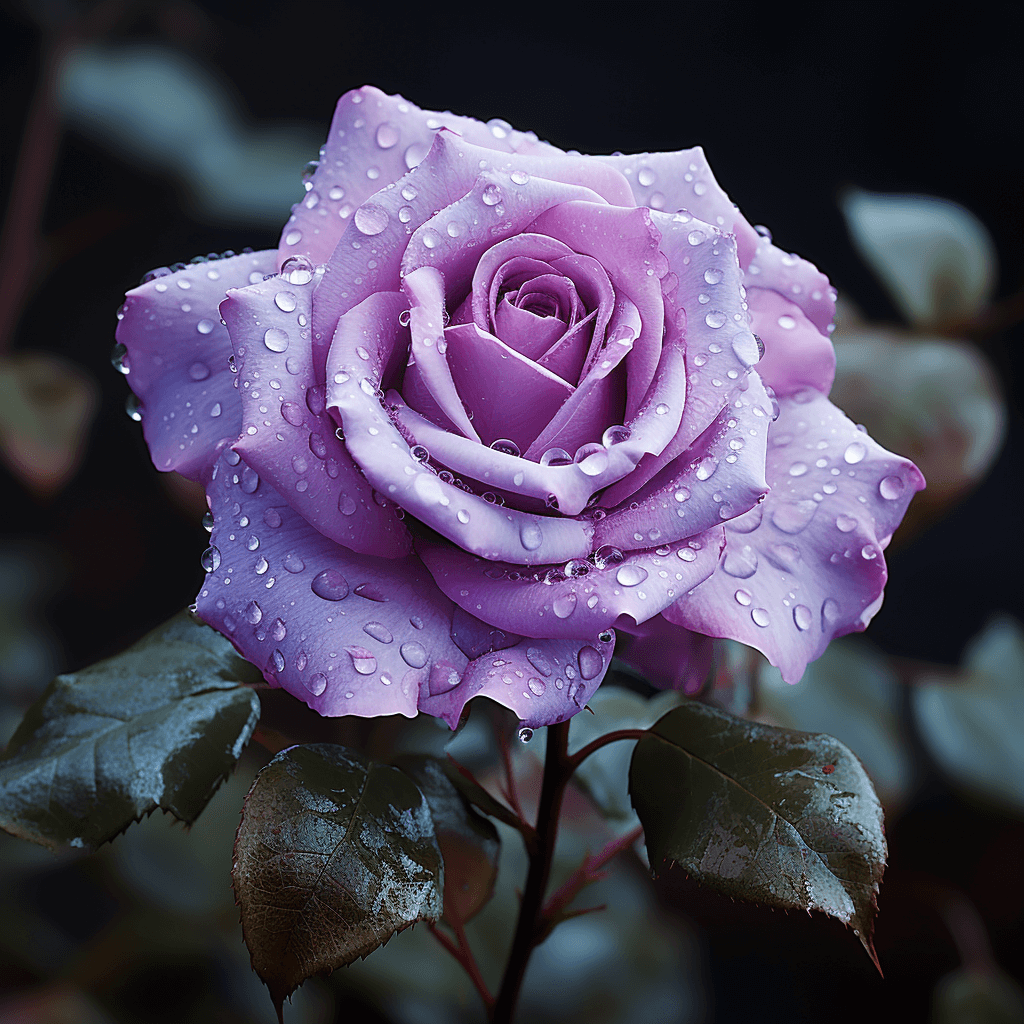
With its surreal shade and dreamy vibes, the lavender rose effortlessly draws one into its world of enchantment, wonder, and mystery.
- History: Though its existence can be traced back centuries, the lavender rose became particularly popular in the Victorian era, symbolizing a secretive allure.
- Symbolism: Lavender roses predominantly stand for enchantment and the beginnings of love. They also encapsulate a sense of wonder and the extraordinary.
- Occasions: Ideal for those moments when words fall short, gifting a lavender rose can signify a love at first sight or a deep admiration for something unique and rare.
- Varieties: Varieties like ‘Stainless Steel’ and ‘Blue Moon’ are sought after for their distinct lavender shades and subtle fragrances.
- Cultural Significance: In many cultures, the lavender rose is synonymous with fantasy, making it a favorite in tales of romance and mystery.
From the fiery passion of orange to the enigmatic allure of lavender, roses continue to tell tales that words often can’t. Their vibrant colors and deep meanings have solidified their place in human history and hearts.
7. Blue Rose: Mystique and Impossibility
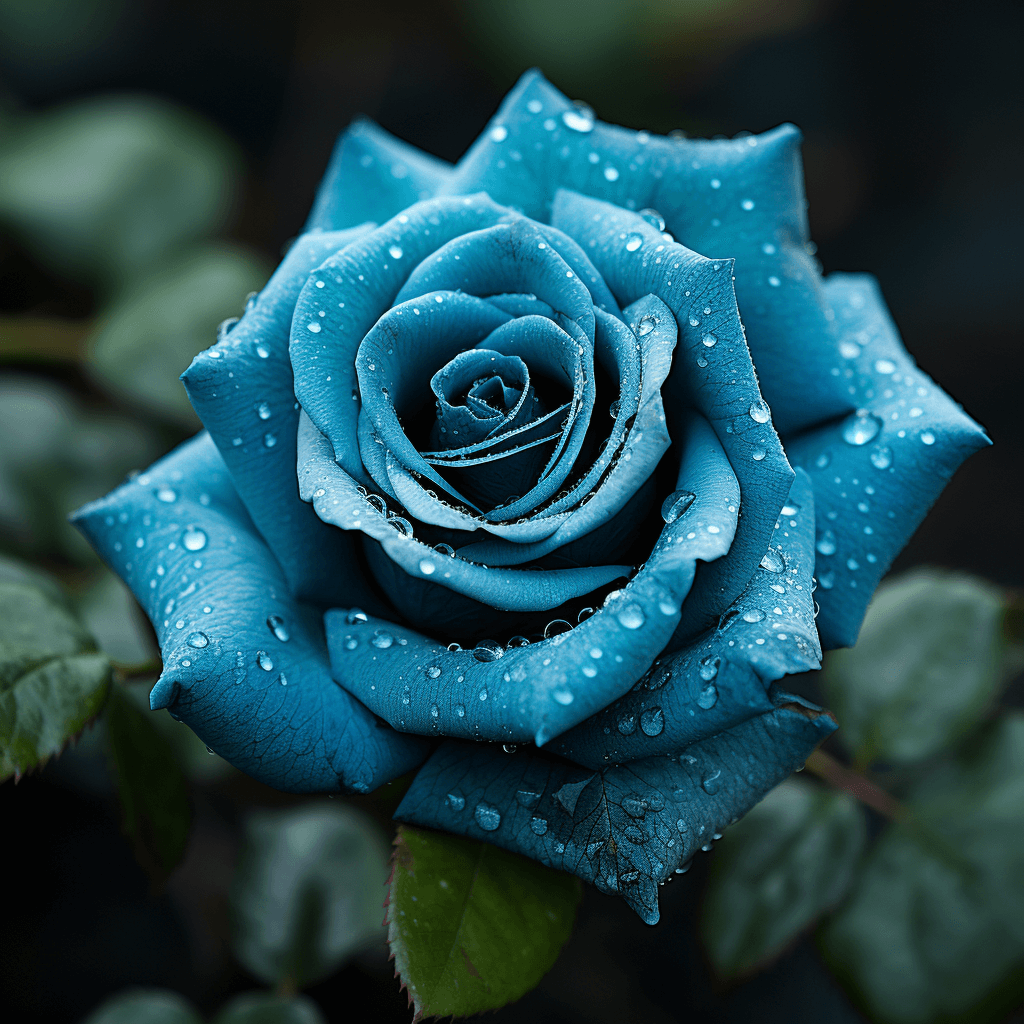
The blue rose, with its ethereal appearance, is a symbol of the mysterious and the unattainable. Its very essence speaks of enigma and dreams beyond reach.
- History: A true blue rose doesn’t occur naturally. The quest for it has led to numerous genetic modifications and experiments, making it a marvel of modern botany.
- Symbolism: Often symbolizing the unattainable or the mysterious, blue roses convey a message of hope, dreams, and the quest for the impossible.
- Occasions: Given on unique occasions, it stands for intricate desires and hopes for the unachievable.
- Varieties: While genuine blue roses are yet to be cultivated, varieties achieved through dyeing and genetic modifications, like ‘Applause’, offer a close resemblance.
- Cultural Significance: In various cultures, the blue rose is a symbol of hope against unattainable love or a representation of something very rare and unique.
8. Green Rose: Natural Harmony and Growth
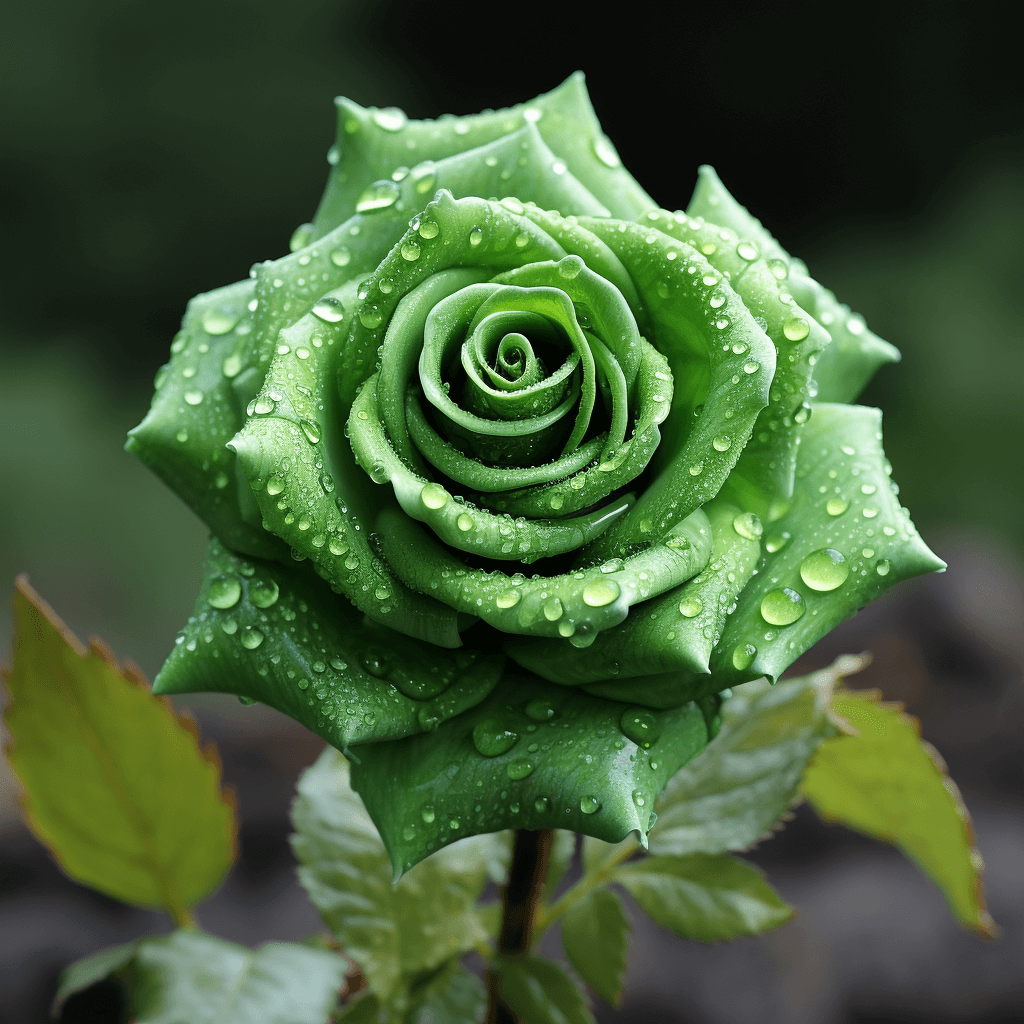
The green rose, a rarity in the vast family of roses, is a symbol of abundant growth, harmony, and fertility.
- History: The green rose, or Rosa chinensis viridiflora, is an ancient variety, with its history as vibrant as its color. It’s known to have existed for centuries, gracing gardens with its unusual hue.
- Symbolism: Green, being the color of life, growth, and abundance, when merged with the elegance of a rose, signifies fertility, richness, and constant growth.
- Occasions: It’s a fitting choice for celebrations of new beginnings, whether it’s a new job, a baby shower, or any venture promising growth.
- Varieties: The ‘Green Diamond’ and ‘Green Ice’ are popular varieties, celebrated for their unique color and texture.
- Cultural Significance: In several cultures, green roses are associated with rejuvenation of spirit, and thus, are often used in rituals and ceremonies signifying growth or rebirth.
9. Black Rose: Farewell and New Beginnings
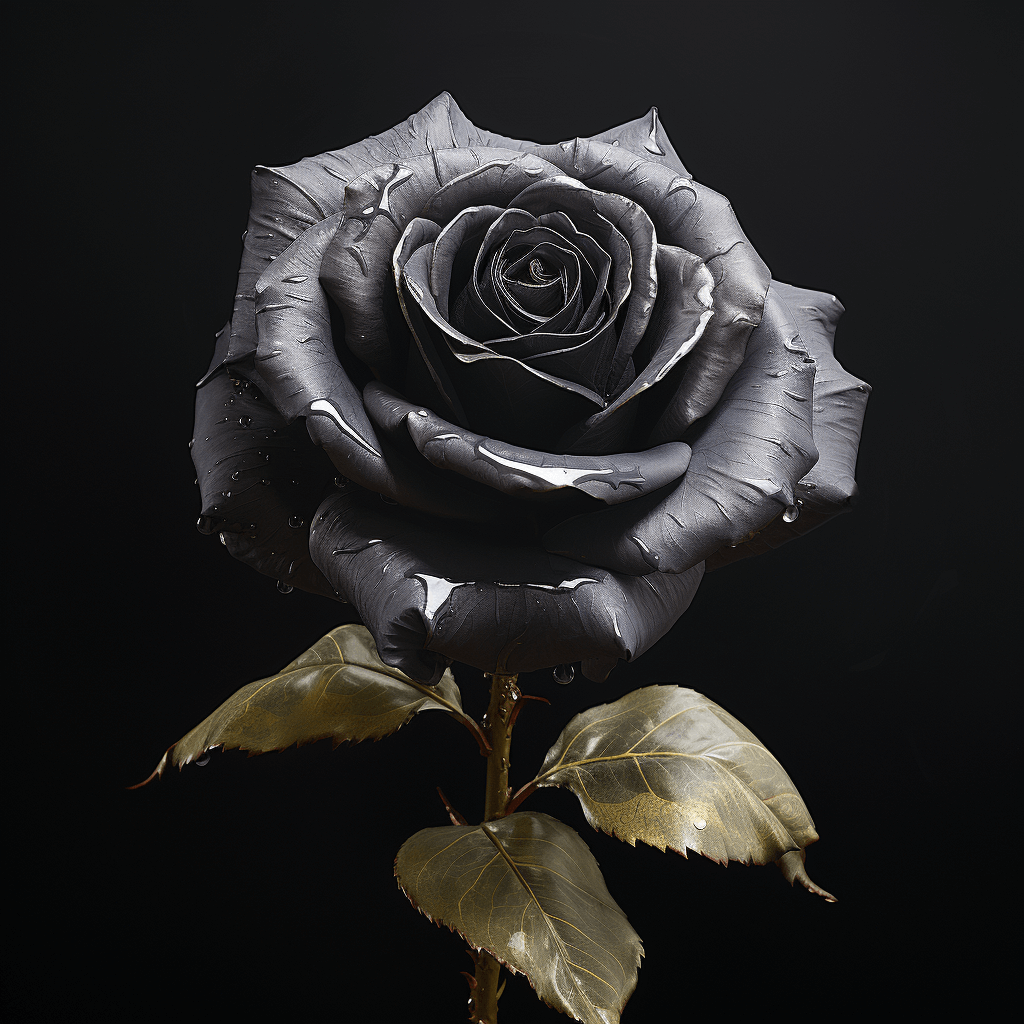
The black rose, often linked with darker themes, carries profound meanings spanning from endings to new opportunities.
- History: True black roses don’t exist in nature. What we commonly refer to as black roses are actually deep crimson or purple roses that appear almost black.
- Symbolism: While commonly representing farewell or the end of something, black roses also symbolize rebirth and new beginnings. They epitomize the end of an era or convey the message of ultimate sacrifice.
- Occasions: Perfect for epitomizing endings, they might be given at retirement, or to signify the end of a relationship. But in a more positive light, they can also represent the start of something new after a major change.
- Varieties: Popular varieties include ‘Black Baccara’, ‘Black Magic’, and ‘Black Beauty’, each admired for its deep, dark hue.
- Cultural Significance: In various cultures, black roses, due to their rarity and unique appearance, are seen as symbols of resistance, resilience, or even anarchy.
10. Cream Rose: Gentle Thought and Elegance

The cream rose exudes a subtle charm and elegance, symbolizing thoughtfulness and appreciation.
- History: Cream roses, with their soft and delicate appearance, have graced gardens and bouquets for centuries, representing a quieter, more muted side of love and admiration.
- Symbolism: These roses stand for charm, thoughtfulness, and gratitude. They convey a message of warmth, care, and understanding.
- Occasions: They’re a fitting choice for moments that call for a gentle touch—like showing gratitude, admiration, or even condolences.
- Varieties: ‘Creme de la Creme’, ‘Cream Abundance’, and ‘Cream Veranda’ are among the sought-after cream rose varieties.
- Cultural Significance: In many cultures, cream roses symbolize grace, humility, and reverence, making them a popular choice for religious ceremonies and quiet celebrations.
11. Peach Rose: A Blush of Modesty
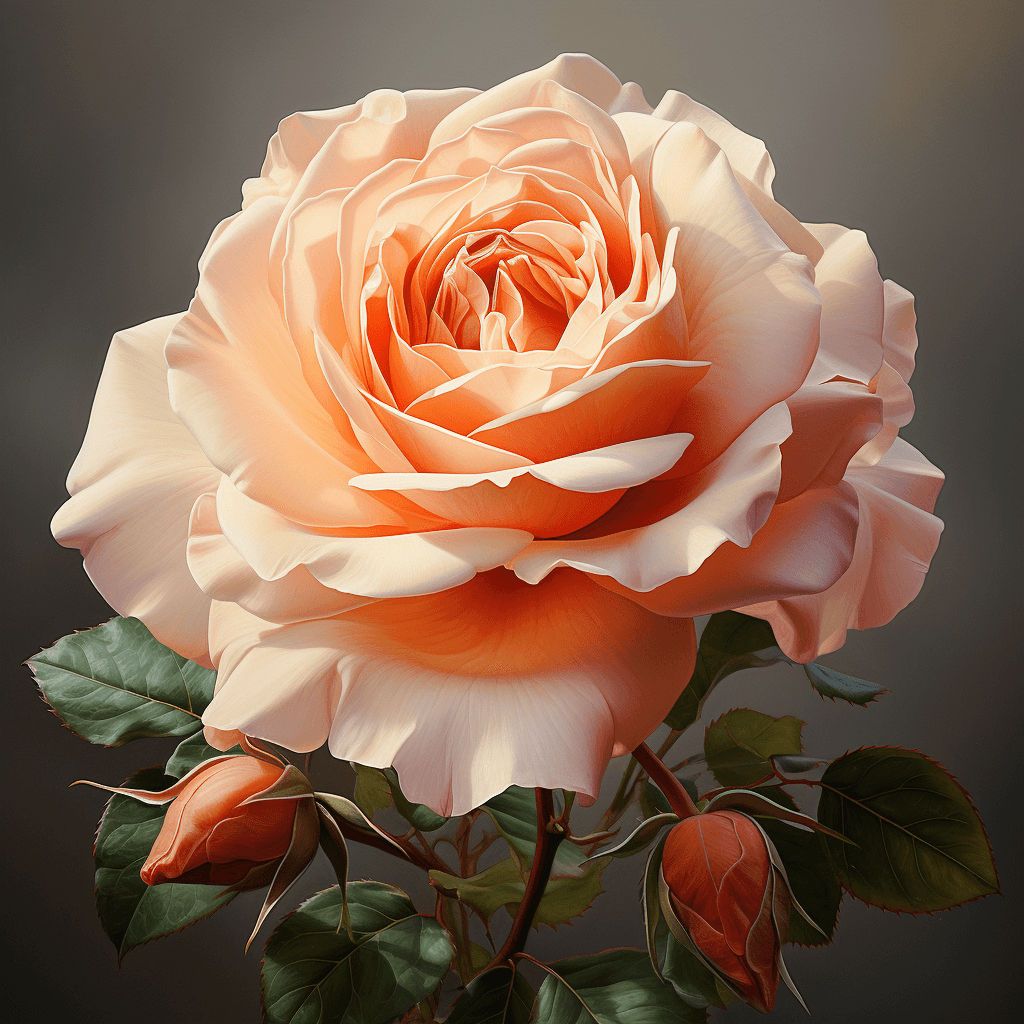
With its gentle hue, the peach rose speaks of modesty, genuine intentions, and a warm appreciation.
- History: Peach roses have long been adored for their soft, sun-kissed appearance, reminiscent of a quiet dawn or a warm blush on one’s cheeks.
- Symbolism: Representing sincerity and modesty, peach roses convey gratitude or sympathy and can also indicate sociability or the joy of getting together with loved ones.
- Occasions: Ideal for showing appreciation or celebrating a close bond, they are often featured in “thank you” bouquets or as tokens of admiration.
- Varieties: ‘Augusta Luise’, ‘Peach Drift’, and ‘Roald Dahl’ are among the popular varieties of peach roses.
- Cultural Significance: In certain cultures, peach roses symbolize the silent power of humility, purity of intention, and the sweet joy of companionship.
12. Coral Rose: Vibrancy of Passion
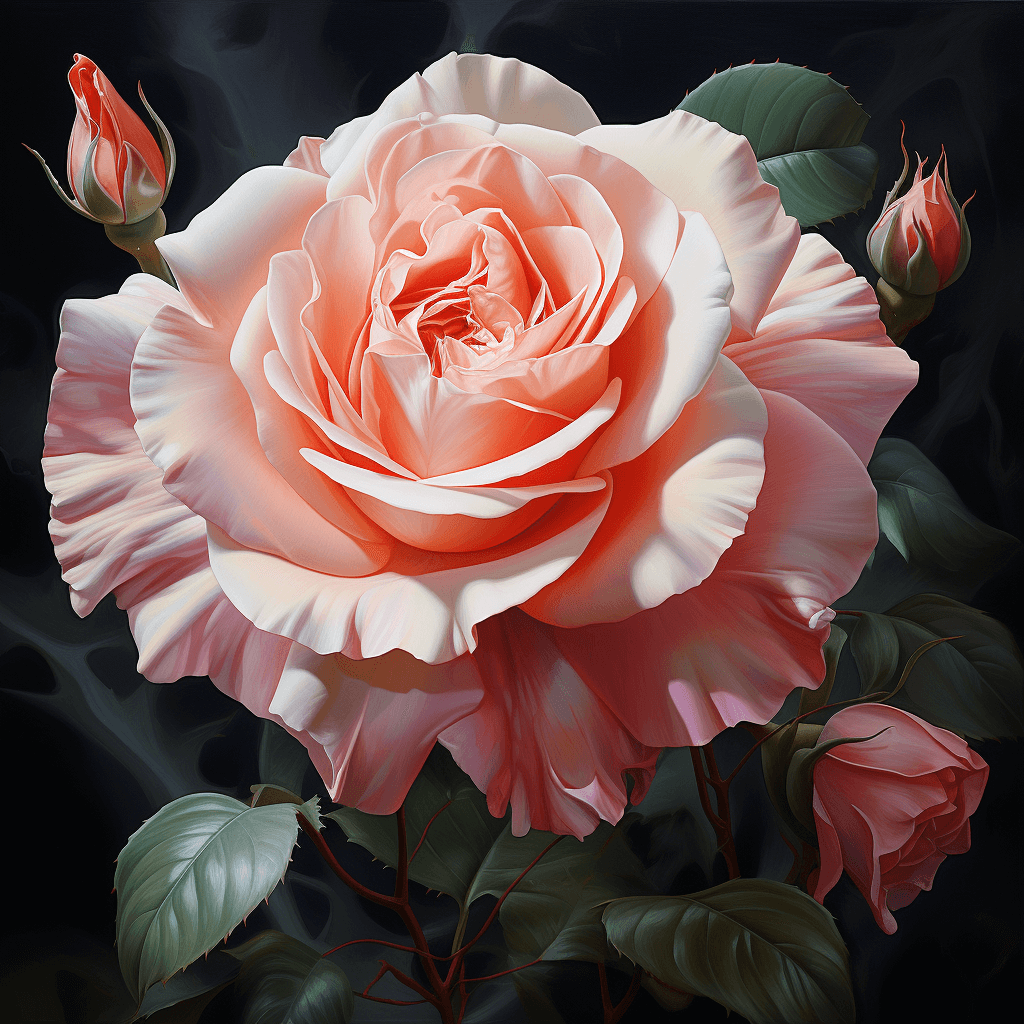
Coral roses are the fiery dancers of the rose family, embodying vibrant energy, desire, and the fervent excitement of new love.
- History: Known for their striking hue, coral roses were seen as a bridge between the passionate red rose and the friendly yellow rose.
- Symbolism: These roses symbolize desire, passion, and excitement. Their vibrant color is evocative of the fervent intensity of a new relationship.
- Occasions: Perfect for romantic endeavors, these roses are given when one wishes to convey a sense of fascination or a magnetic attraction towards someone.
- Varieties: Varieties like ‘Tropical Amazon’, ‘Magma’, and ‘Coral Charm’ are coveted for their intense colors and captivating presence.
- Cultural Significance: In many traditions, the coral rose has been a symbol of desire and profound attraction, resonating with the intensity of heartfelt emotions.
13. Burgundy Rose: Depth of Adoration
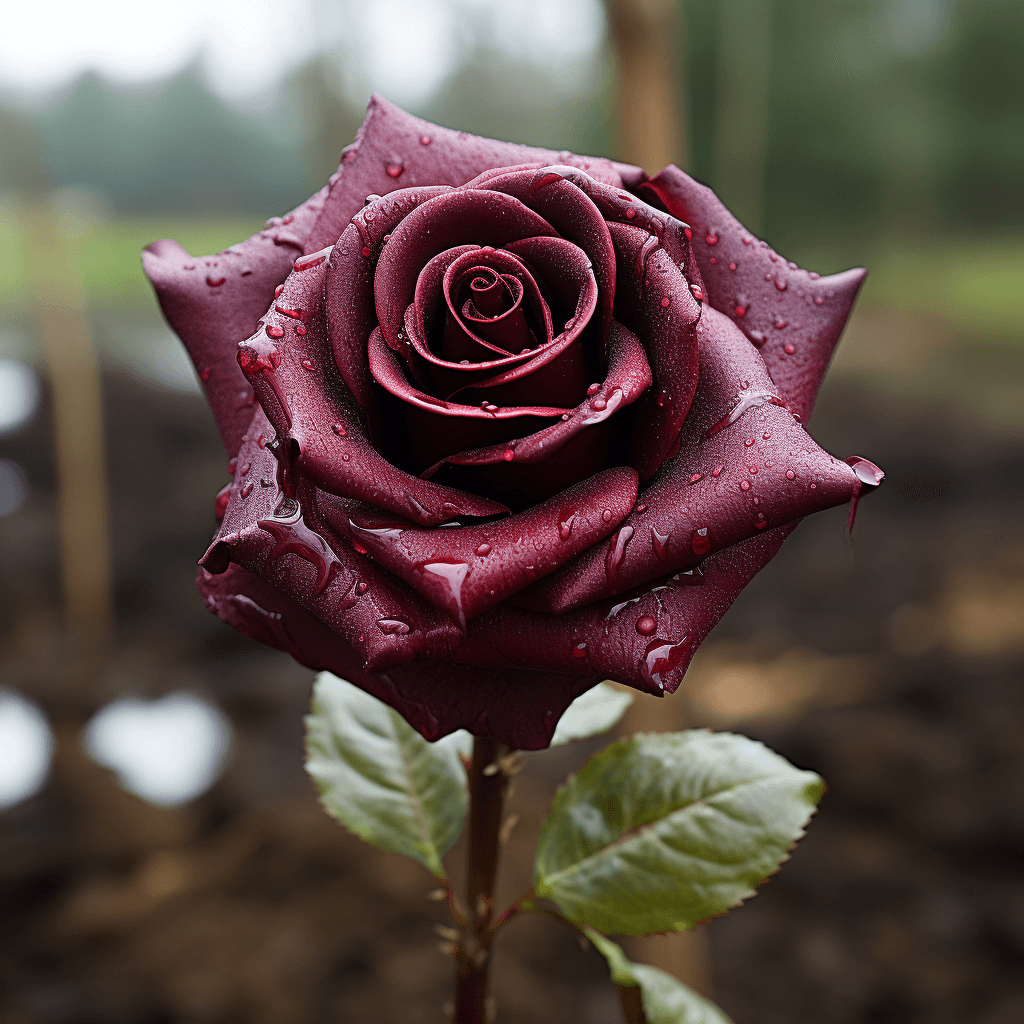
The deep, almost velvety hue of the burgundy rose is evocative of deeper feelings, emphasizing the unconscious beauty that often goes unnoticed at first glance.
- History: The burgundy rose, with its rich wine-like shade, has its roots in ancient gardens and has been celebrated in literature and art for centuries.
- Symbolism: Representing an unconscious beauty, the burgundy rose signifies a beauty that is not immediate or overt but deep and compelling.
- Occasions: This rose is a beautiful choice for anniversaries or intimate occasions, emphasizing a deepening bond and growing admiration.
- Varieties: ‘Black Baccara’, ‘Burgundy Iceberg’, and ‘Darcy Bussell’ are among the renowned varieties of burgundy roses.
- Cultural Significance: In certain cultures, the burgundy rose is a reminder of silent beauty, representing mysteries of the heart that unfold over time.
14. Teal Rose: Echoing the Depths

While not naturally occurring, the teal rose has become a symbol of intrigue, representing the unique, mysterious, and often the uncharted territories of emotions.
- History: The teal rose is a creation of modern times, often achieved through dyeing, capturing imaginations with its enchanting hue reminiscent of deep oceans.
- Symbolism: Embodying mystery and uniqueness, the teal rose conveys messages that are beyond the ordinary, echoing depths of feelings and thoughts.
- Occasions: Perfect for those looking to make a unique gesture or celebrate a one-of-a-kind relationship, the teal rose stands out in any bouquet.
- Varieties: Being a dyed creation, the teal rose does not have natural varieties. However, white roses are often used as the base for achieving this intriguing shade.
- Cultural Significance: In contemporary interpretations, the teal rose symbolizes the journey of discovering the unknown, both in love and in life.
15. Gold Rose: Gleaming with Grandeur
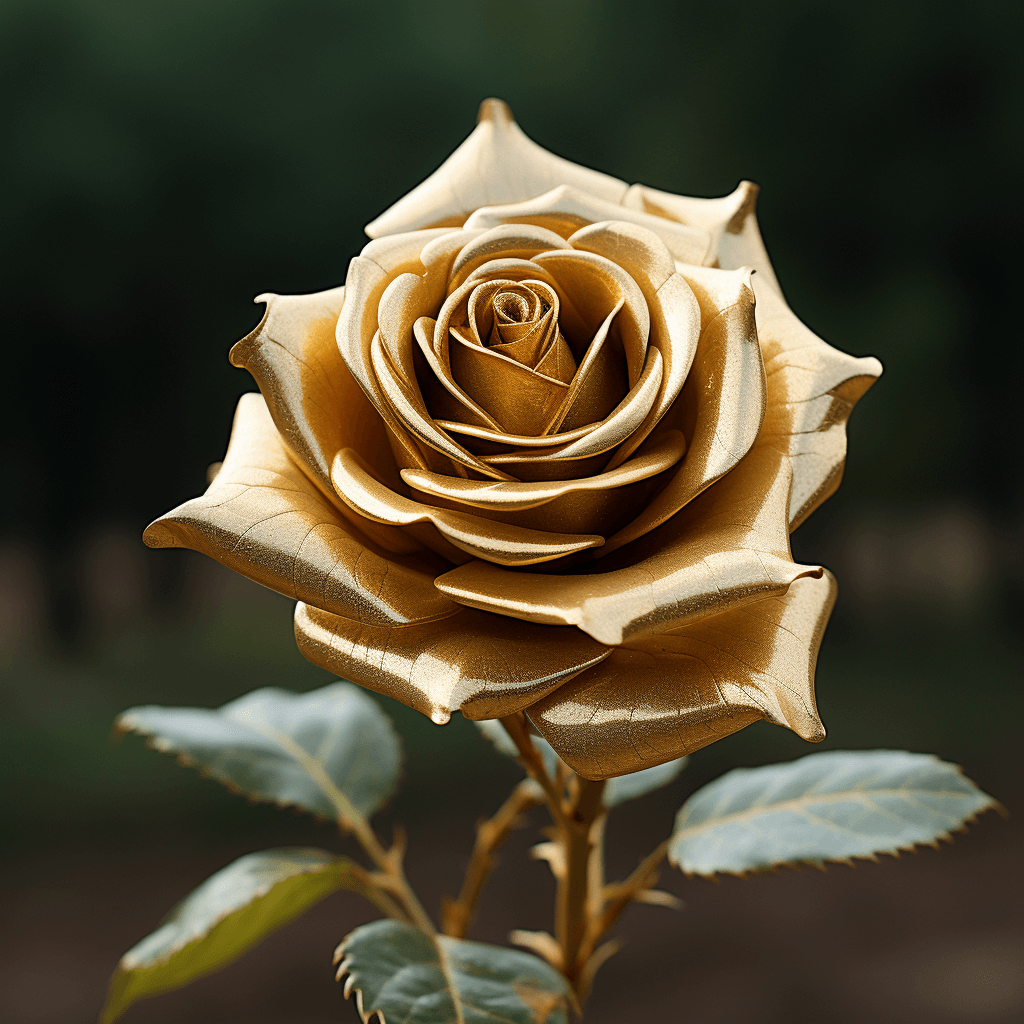
The radiant gold rose, often painted or electroplated, stands as an emblem of prosperity, achievement, and opulence.
- History: While not naturally occurring, gold roses have been crafted for centuries as tokens of esteem, often presented to monarchs and dignitaries.
- Symbolism: Representing prosperity, wealth, and elegance, the gold rose conveys feelings of grandeur and admiration.
- Occasions: It’s a popular gift for milestone anniversaries, significant achievements, or to commemorate moments that are worth their weight in gold.
- Varieties: Actual gold roses are often real roses plated with 24k gold, preserving the rose for eternity.
- Cultural Significance: In many cultures, gifting something gold, like the gold rose, is seen as wishing prosperity and fortune upon the recipient.
16. Silver Rose: Capturing Sublime Sophistication
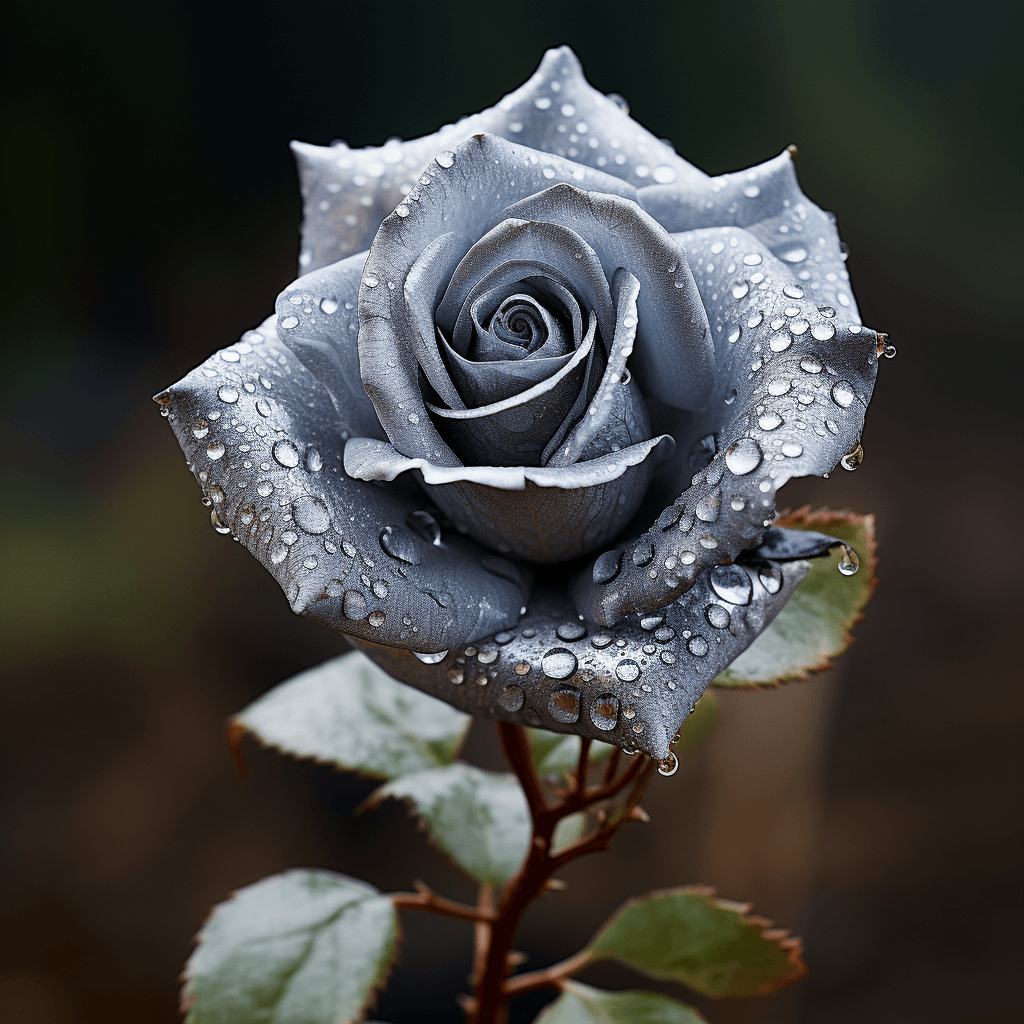
The silver rose, with its lustrous sheen, encapsulates a refined beauty, echoing sentiments of grace, serenity, and reverence.
- History: Like the gold rose, silver roses are often crafted by artisans, transforming natural roses into enduring symbols of beauty through silver plating.
- Symbolism: Signifying refined beauty, humility, and a serene grace, the silver rose is a tribute to pure and transcendent love.
- Occasions: They make exquisite gifts for silver anniversaries or occasions that call for a touch of timeless elegance.
- Varieties: Real roses can be preserved and plated in fine silver, making each one a unique work of art.
- Cultural Significance: In various traditions, silver is associated with the moon, purity, and clarity, making the silver rose a symbol of clear and pure intentions.
17. Rainbow Rose: A Burst of Vibrancy
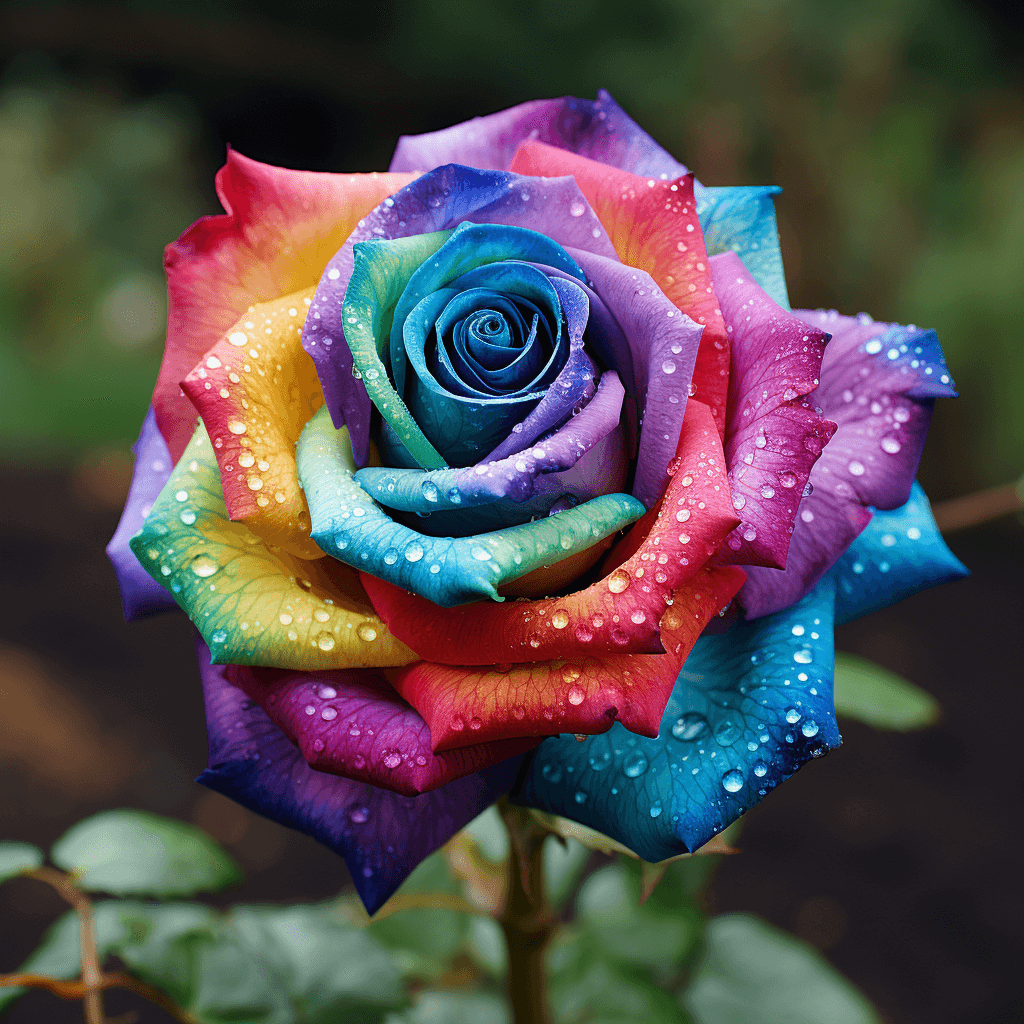
The dazzling rainbow rose, with its kaleidoscope of colors, is an artistic marvel, symbolizing a spectrum of emotions and the hope that emerges from diversity.
- History: Originally created by the Dutch flower company Flower Art using a special dyeing technique, rainbow roses are a relatively recent addition to the world of floristry.
- Symbolism: Each color on the rose embodies a different emotion, and together, they represent happiness, hope, and a celebration of life’s multifaceted beauty.
- Occasions: Perfect for celebrations like birthdays, anniversaries, or any moment that calls for a burst of color and joy.
- Varieties: These roses are usually white roses that undergo a process where their petals absorb various natural dyes to achieve the rainbow effect.
- Cultural Significance: They’re a modern favorite, especially among younger generations, and are often associated with LGBTQ+ pride and celebrations.
18. Brown Rose: The Emblem of Earth’s Elegance
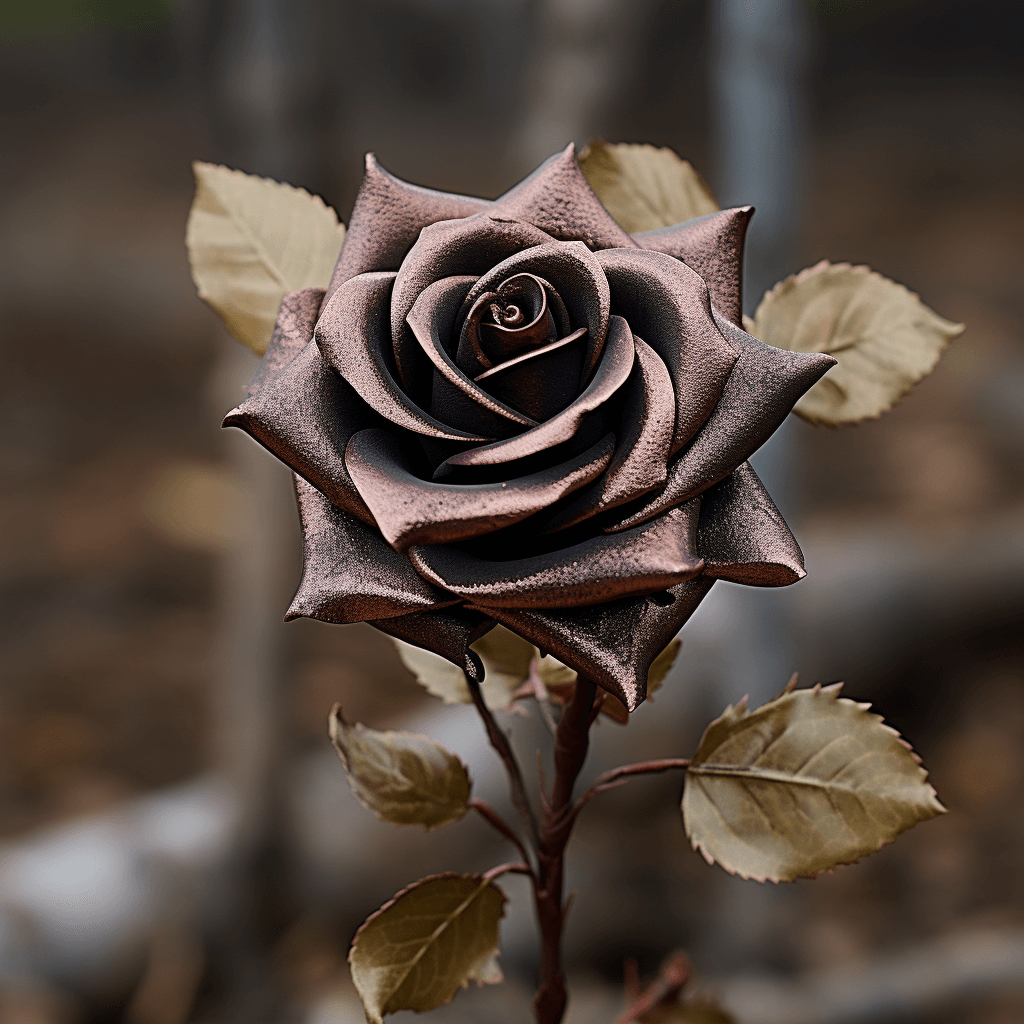
The understated brown rose, often associated with autumn, evokes a sense of warmth, stability, and a grounded love.
- History: While not as commonly featured as other colors, brown roses (or chocolate roses) have found their niche in rustic and autumnal arrangements.
- Symbolism: Representing a steadfast love, warmth, and reliability, they’re a reminder of life’s constants and the earth’s grounding energy.
- Occasions: Ideal for rustic weddings, anniversaries, or as a comforting gesture in times of need.
- Varieties: Varieties like ‘Coffee Break’ and ‘Hot Cocoa’ are popular choices for their unique hues and tones.
- Cultural Significance: In some cultures, the brown rose signifies strength and resilience, reminding us of the unwavering beauty of nature.
Roses Across the Globe: Meanings in Different Cultures
Roses, with their universal appeal, have found their way into the hearts and histories of various cultures around the world. While their beauty is universally acknowledged, the meanings and interpretations they carry can vary fascinatingly from one culture to another.
-
Asia:
- China: Roses, especially the red ones, are associated with prosperity and power. They’re often gifted on special occasions and used in traditional medicines.
- Japan: Roses symbolize respect, affection, and courage. The famous “Tsubaki” or Camellia flower, similar to a rose, has a deep cultural significance, especially within the samurai class.
-
Middle East:
- Persia (Ancient Iran): Roses have been a significant part of Persian culture for centuries. They symbolized love, spirituality, and beauty. Ancient Persian poets, like Rumi, often used the rose as metaphors in their poems.
- Turkey: Home to the famous rose gardens of Isparta and the annual Rose Festival, roses in Turkey symbolize love, mystery, and a deep spiritual journey.
-
Europe:
- England: The rose is a national symbol, especially the Tudor rose, which represents unity. In literature, Shakespeare famously wrote about the rose in Romeo and Juliet, giving it a romantic association.
- France: Roses are symbols of passion, love, and respect. The country is also renowned for its perfume industry in Grasse, where roses play a pivotal role.
-
Americas:
- USA: Roses, particularly the red ones, are symbolic of love and appreciation. The country also celebrates National Red Rose Day on June 12th.
- Mexico: Roses hold religious significance, especially the miraculous appearance of the image of Our Lady of Guadalupe in a bed of roses.
-
Africa:
- Egypt: Historically, roses were considered symbols of love and sacredness. Cleopatra famously used rose water in her skincare regime, believing in its healing properties.
- South Africa: Roses, especially wild varieties, are appreciated for their beauty and resilience, symbolizing hope and new beginnings.
The universality of roses is evident in their widespread cultural significance. They bridge linguistic and cultural gaps, bringing people together with their timeless beauty and layered meanings.
Expressing Feelings Through Numbers: Roses and Their Numerical Significance
Flowers, and roses in particular, have been used for centuries to convey emotions. The subtle nuances of their colors, fragrances, and arrangements play a part in their message. Among these, the number of roses given holds a language of its own. Offering a single rose might convey a vastly different sentiment than gifting a dozen. Let’s delve into the numerical significance of roses and uncover the hidden messages they convey.
| Number of Roses | Meaning |
|---|---|
| 1 Rose | Deep love |
| 2 Roses | Mutual feelings |
| 3 Roses | “I love you” |
| 4 Roses | Nothing romantic intended |
| 5 Roses | Admiration |
| 6 Roses | Infatuation |
| 7 Roses | “I’m yours” |
| 8 Roses | Gratitude |
| 9 Roses | Eternal love |
| 10 Roses | Perfection |
| 11 Roses | “You’re my treasured one” |
| 12 Roses | “Be mine” |
| 13 Roses | Friendship |
| 15 Roses | Apology |
| 20 Roses | Sincerity |
| 21 Roses | Dedication |
| 24 Roses | “I’m yours” |
| 25 Roses | Congratulations |
| 30 Roses | Faithfulness |
| 40 Roses | Genuine love |
| 50 Roses | Unconditional love |
| 99 Roses | “I’ll love you till the day I die” |
| 100 Roses | “You’re my true love” |
| 101 Roses | “I’m devoted to you” |
| 108 Roses | Marriage proposal |
| 365 Roses | “I love you every single day” |
| 999 Roses | Infinite love |
Understanding the number-code of roses adds depth to the act of gifting them. Whether it’s a single rose symbolizing a profound emotion or a bouquet of 365 representing unwavering daily devotion, every number tells a story.
The Divine Rose: Significance in Religion and Spirituality
Throughout history, the rose has transcended its botanical realm, embedding itself deeply within religious and spiritual contexts. Its beauty, fragrance, and form have made it a favorite emblem for divine love, purity, and the mysteries of faith. Let’s trace the rose’s sacred journey across different religions and spiritual practices.
Roses in Christianity
In Christian symbolism, the rose, especially the red one, is often associated with the Virgin Mary, sometimes referred to as the “Mystical Rose.” The rose’s beauty and thorns have been seen as emblematic of Mary’s pure love and the pain she endured. Moreover, rose gardens have been used in Christian art to depict paradise, linking the rose with heavenly bliss and divine love.
Roses in Islam
Roses hold a special place in Islamic culture. It’s believed that the first rose sprouted from the sweat of Prophet Mohammed during his night journey to heaven. The rose’s fragrance is highly esteemed in Islamic traditions, and it’s often used in religious rituals. Sufi poets, like Rumi, have extensively used rose symbolism to convey themes of love, divine beauty, and spiritual longing.
Roses in Buddhism
In Buddhist teachings, the blooming of a rose is analogous to the blooming of the human heart into enlightenment. Its transient nature mirrors the Buddhist teaching on impermanence, reminding followers of the fleeting nature of life and the importance of mindfulness.
Roses in Hinduism
In Hindu rituals, roses are a favored offering to deities, symbolizing pure love, devotion, and purity. The goddess Lakshmi, representing wealth, grace, and beauty, is sometimes depicted seated within a rose, highlighting its spiritual significance.
Roses in Alchemy and Mysticism
In the world of alchemy, the rose was symbolic of the philosopher’s stone and the process of transformation. The unfolding petals of a rose represented layers of hidden knowledge, gradually revealing the truth. Many mystic traditions use the rose as a meditative symbol, representing the inner journey and spiritual awakening.
Across different faiths and spiritual practices, the rose emerges as a universal emblem of divine love, purity, and spiritual growth. Its presence in scriptures, rituals, and teachings underscores its profound significance, bridging the gap between the earthly and the divine.
Roses in Rituals: Celebrations and Ceremonial Uses
Roses, with their timeless beauty and enchanting fragrance, have woven their way into numerous cultural celebrations and rituals around the world. These flowers, often deemed as symbols of love, purity, and transition, have become integral to many significant life events, connecting emotions and traditions. Let’s delve into some of the most notable ceremonial uses of roses.
Weddings
Across cultures, roses, especially white and red ones, have been a staple in wedding ceremonies. Representing love, purity, and unity, they are often found in bridal bouquets, centerpieces, and even petal showers. In some customs, rose petals are spread along the aisle, symbolizing a path filled with love and passion.
Birth Ceremonies
In certain traditions, roses are presented to new mothers after childbirth, symbolizing the blooming of life and the joyous introduction of a new soul into the world. Pink roses, representing grace and joy, are often chosen for this joyous occasion.
Funerals
Due to their emblematic association with transition and the fleeting nature of life, roses frequently find their place in funerary rites. Black and deep red roses can symbolize the final farewell, while white roses can denote the purity of the departed soul and the hope for peaceful transition.
Valentine’s Day
A celebration of love and affection, Valentine’s Day sees a surge in the gifting of red roses. Representing deep love and admiration, roses become the language of hearts, silently conveying emotions and sentiments.
Rites of Passage
Be it a graduation, a religious milestone like baptism or bar mitzvah, or any other significant life transition, roses often accompany the celebratory gestures. Their beauty serves as a reminder of growth, achievement, and the ever-evolving journey of life.
Anniversaries
Marking the milestones of shared time and memories, roses are quintessential in anniversary celebrations. Different anniversaries might even have specific rose colors associated with them, with each hue commemorating unique phases and sentiments of the relationship.
From beginnings to farewells, from expressions of love to symbols of remembrance, roses have become deeply entwined in the tapestry of human ceremonies. Their versatile symbolism and captivating charm make them apt for almost every significant life event, etching memories and emotions in petals and fragrances.
Concluding Reflections
Embarking on this fragrant journey through time, tracing the paths of roses from ancient civilizations to modern rituals, we’ve uncovered the deep-seated connection between humans and these enchanting blooms. The rose, in all its diverse colors and forms, has stood as a silent witness to myriad human emotions – love, passion, reverence, sorrow, and celebration.
The universality of the rose is astounding. Regardless of the era, culture, or geography, this singular flower has consistently resonated with profound significance, effortlessly weaving its way into the tapestry of our collective experiences. Its presence in literature, art, religion, and daily ceremonies is a testament to its timeless appeal.
- Symbol of Endurance: Despite being delicate in appearance, the rose symbolizes resilience and endurance. It thrives, blossoms, and exudes its fragrance even amongst thorns, serving as a poignant metaphor for life with its blend of joys and challenges.
- Universal Language of Emotion: Be it a singular rose bud gifted in deep love or a bouquet presented in jubilant celebration, roses have always been a medium for expressing the inexpressible, making them an invaluable part of human communication.
- Spiritual Significance: The rose’s presence in religious texts and practices highlights its spiritual dimension, often symbolizing divine love, purity, and transcendence.
- Ceremonial Emblem: As we’ve discovered, roses have been integral to numerous ceremonies across cultures, marking pivotal moments in individual and collective lives. Their versatility makes them apt for every occasion, from birth to final rites.
As we conclude, it becomes clear that the allure of the rose is not merely about its sensory beauty but its ability to mirror our emotions, beliefs, and milestones. It has been, and continues to be, an emblem of humanity’s shared experiences and sentiments. Just as a rose remains captivating through its life cycle, from a tender bud to a full bloom, its significance in our lives too remains evergreen, etching memories and weaving stories for generations to come.

